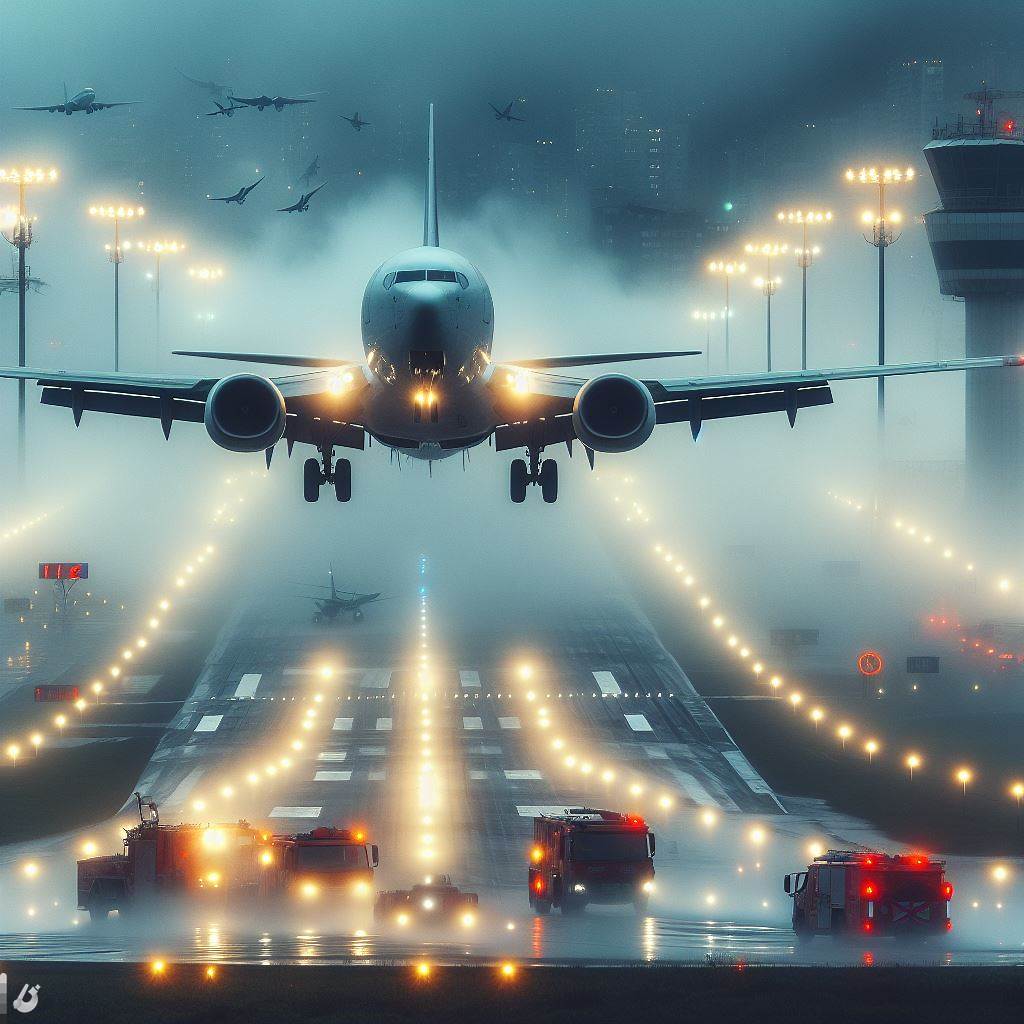
In the past few days, Delhi’s airport has faced chaos due to thick fog causing flight delays and diversions. This has shown us the problems with the airport and how hard it is for airlines when there’s thick fog.

The disruptions are a result of heavy fog engulfing the capital in the early hours, expected to persist due to predicted cold waves until January 21. Union Minister for Civil Aviation Jyotiryaditya Scindia mentioned that flight operations had to be briefly suspended due to severe fog.
But why does fog make planes late, and how do pilots make sure they land safely when they can’t see well?
Instrument Landing System (ILS)
Landing an aircraft in fog presents unique challenges requiring precise coordination, advanced technology, and a focus on safety. Pilots and air traffic controllers work closely using tools like the Instrument Landing System (ILS).
ILS is like a GPS for planes, telling pilots exactly where they are and how they’re lined up with the runway. Consisting of the localizer and glide slope, ILS guides pilots both horizontally and vertically during low-visibility conditions.
This system helps pilots understand their aircraft’s position concerning the runway without physically seeing it. It warns them if their jets deviate from the runway’s centerline or fly too high or low, crucial for safe landings when visibility is limited.
Avionics and Autopilot Systems
Modern aircraft are equipped with avionics and autopilot systems enhancing precision during foggy landings. These systems, coupled with radar altimeters, maintain a stable descent, ensuring the aircraft follows the designated glide path with minimal reliance on external visibility.
Also Read: Comprehensive Approach to Eye Health
Even with fancy technology, pilots need their skills during fog. They use training and experience to make quick decisions, paying attention to their cockpit gadgets and talking well with air traffic control.
Key to Safe Landings
Airports play a crucial role in facilitating safe landings during fog. Adequate runway lighting and advanced monitoring systems, like Runway Visual Range (RVR) sensors, provide real-time visibility information. However, Delhi airport faces challenges due to the unavailability of one of its two CAT III-compliant runways.
CAT-III runways, equipped to handle low-visibility conditions, are crucial for foggy landings. Delhi airport has two such runways, but one is closed for repairs, leading to delays.
Anticipating Challenges
Pre-flight planning is crucial in anticipating challenges associated with foggy weather. Flight crews review weather forecasts, focusing on visibility and cloud cover. Alternate airports and diversion plans are established in advance, allowing prompt action if conditions deteriorate.
Despite precautions, if conditions worsen beyond acceptable limits, flight crews execute a missed approach or go-around. This involves applying full power and initiating a climb for another attempt or diverting to an alternate airport with better weather conditions.
Also Read: Google’s Free AI Courses Unveiled
Verdict
Landing planes in foggy weather is like solving a puzzle. It needs cool gadgets, smart pilots, and good airport stuff. In India, where fog causes problems, we need to think about everything together to keep air travel safe and smooth.

